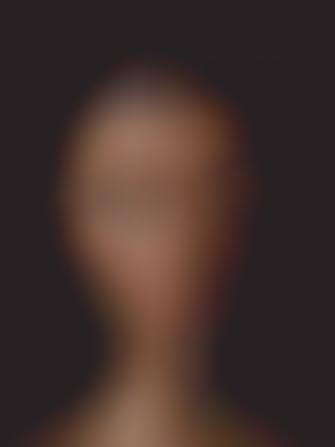
Sheila Pree Bright on Plastic Bodies
“This body of work addresses the loss of personal identity many women experience, specifically women of colour,” she said.
“American concepts of the “perfect female body” are clearly exemplified through commercialism, portraying “image as everything” and introducing trends that many spend hundreds of dollars to imitate. It is more common than ever that women are enlarging breasts with silicone, making short hair longer with synthetic hair weaves, covering natural nails with acrylic fill-ins, or perhaps replacing natural eyes with contacts.
“Even on magazine covers, graphic artists are airbrushing and manipulating photographs in software programs, making the image of a small waist and clear skin flawless. As a result, the female body becomes a replica of a doll, and the essence of natural beauty in popular American culture is replaced by fantasy.”
Biography
Sheila Pree Bright’s career began in her teen years photographing the gangsta rap scene in Houston. In 2003, she creates her MFA thesis photo series, Plastic Bodies. This was featured in the film Through the Lens Darkly. She won the center prize at the Santa Fe Center of Photography in 2006 for her Suburbia series. She had her first solo exhibition at the High Museum of Art. In 2014, she went on to do her series 1960Who . These series were portraits of famous civil rights activists from the ’60s and ’70s. She plastered these images on large public walls. In 2014 and 2015, she traveled to Ferguson and Baltimore after the murders of Freddie Gray and Micheal Brown. These images formed her series #1960Now. In 2018 the book was published.

Analysis

Technical
The photo has been taken in a studio setting so there is studio lighting which you can see on the left side of the subjects face and more shadow on the right side. The aperture must have a bigger number because there is a shallower depth of field which is seen in the way that the face is in focus but not the neck.
Visual
The image has been composed so the doll’s face is in the center so your focus is on the doll and its asymmetrical face.
Conceptual
The artist’s aim behind this image is to demonstrate unrealistic beauty standards presented through dolls. She specifically looks at it from a black identity point of view in the way that she believes black women are misrepresented in dolls. This image specifically she was trying to show how dolls always have had makeup when a real woman doesn’t always wear makeup, how a real person’s eyes are a lot smaller. In her interview, she talks about contact lenses which show in this image in the way that half of the dolls face has a green eye and the other a brown eye. Bright believes that dolls are a false representation of how women are physically formed and become unrealistic models of beauty that influence children.
This image is part of a series of images by Shiela Pree bright called Plastic bodies created in 2003. The focus of the series was the misrepresentation of black women in dolls and Barbie. It focused on unrealistic beauty standards and unrealistic body stereotypes. Sheila Pree Bright is quoted to have said ‘ Although Barbie serves as a toy for children, she represents much more. The doll somehow becomes a model of beauty, a false representation of how women are physically formed. In some cases, women will aspire to this model to the extent of deconstructing their own image by various forms of beautification. I show how these extremes are illusions by using models and dolls as the subjects’. Bright has taken the image with a main front light on the left side of the face leaving a small portion of the face in shadow. Bright’s concept, of lack of correct black female representation, ties in with other works she has done. Her work always focuses on civil rights and racial inequality.
